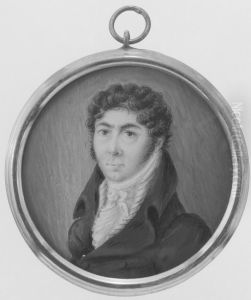Carl Koch Paintings
Carl Koch, although not as universally recognized as some of his contemporaries, was a significant figure in the realm of architecture and urban planning, particularly in Germany. Born on May 11, 1887, in Karlsruhe, Germany, Koch's early life set the stage for a career that would be marked by innovation, resilience, and a profound commitment to functionalism in architecture. His contributions to the field, especially during the tumultuous periods of the early to mid-20th century, reflect a keen adaptability and an enduring vision for modern living spaces.
Koch's educational background and early career were deeply influenced by the prevailing currents of thought in architecture and urban planning of his time. He was educated at the Technical University of Munich and later at the Technical University of Berlin, where he was exposed to the latest theories and practices in architecture. This education provided a solid foundation for his later work, which often sought to harmonize aesthetic considerations with practical functionality, a hallmark of the modernist movement in architecture.
Throughout his career, Koch demonstrated a particular interest in the design of residential buildings and urban planning. His approach was characterized by a minimalist aesthetic, efficient use of space, and a focus on creating livable, human-centered environments. This was evident in his involvement with the Werkbund and other architectural movements that aimed to improve living conditions through design. Koch's work during the interwar period and after World War II contributed to the rebuilding and modernization of German cities, reflecting a broader European movement towards reconstruction and renewal.
Despite the challenges posed by the political and economic upheavals of the 20th century, including two World Wars and the Great Depression, Koch remained committed to his vision of architecture as a tool for social improvement. His designs often incorporated innovative materials and construction techniques, reflecting an ongoing engagement with the technological advancements of his time.
Carl Koch's legacy in architecture and urban planning is marked by his contributions to the development of modernist architecture in Germany and beyond. His work not only reflects the aesthetic and conceptual shifts of the 20th century but also embodies a deep commitment to improving the quality of urban life through thoughtful design. Koch passed away on December 10, 1963, leaving behind a body of work that continues to inspire architects and urban planners around the world.
